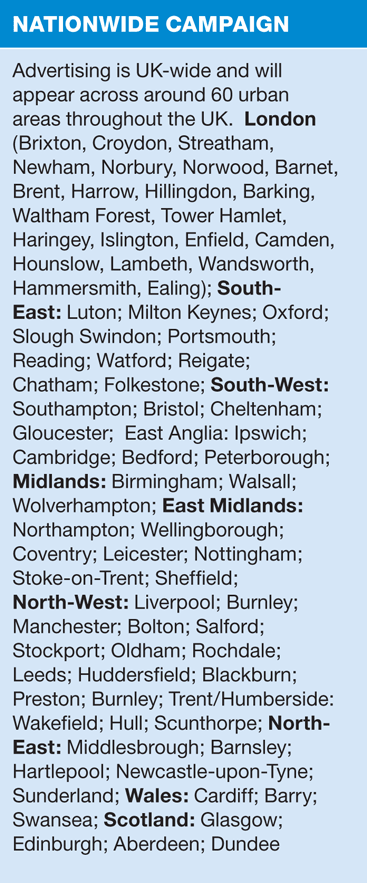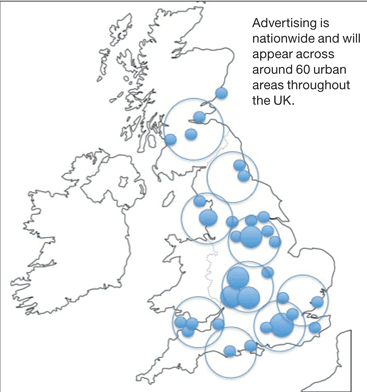Diabetes UK launches largest ever Type 2 diabetes awareness campaign
Barbara Young, Chief Executive of Diabetes UK
Barbara Young, Chief Executive of Diabetes UK
In a bid to educate members of the public about the risk factors for type 2 diabetes, this month Diabetes UK launches the largest ever public awareness campaign
Every three minutes, someone in the UK learns that they have diabetes. There are currently 3.8 million people in the UK with diabetes and that number is set to rise to 5 million by 2025. The rapidly growing scale of the condition is alarming, as are the associated care and treatment costs.
In 2011, NHS spending on diabetes was almost £10 billion, or about 10 per cent of the NHS budget. Of that huge amount of money around 80 per cent goes on managing complications that could often be prevented.
Type 2 diabetes accounts for about nine out of 10 cases. Lifestyle factors such as being overweight or obese can play a key role in increasing the risk of the condition. A person's family history and ethnicity, even if they are a healthy weight, can also put them at significant risk of developing Type 2 diabetes. The important thing is that people understand the risk factors and how to monitor that risk.
Unfortunately we know from extensive research that most people simply don't know the risk factors of Type 2 diabetes and don't realise the seriousness of the condition. We believe it's vital for people to understand the importance of getting risk assessed so that those identified as being at high risk can start getting the support they need.
Thanks to Diabetes UK's national charity partnership with Tesco, we will be launching the largest ever public awareness campaign about Type 2 diabetes on September 23. NHS England, Public Health England, Public Health Wales, the Royal College of General Practitioners and Jonathan Valabhji, the national clinical director for obesity and diabetes, are all publicly backing our campaign. It has also had coverage on the Royal College of Nursing website.
The advertising is clear and upfront about how serious it can be to have Type 2 diabetes, the possible complications and what people can do to avoid getting the condition. The £2 million nationwide campaign will run for two weeks and aims to raise awareness of the risk factors of Type 2 diabetes in the 'at-risk' population and enable people to understand their personal risk of developing the condition.
Once people have their risk checked, either online (www.diabetes.org.uk/riskscore) or by visiting a Tesco pharmacy or other pharmacies, or their GP, those at high risk will then be advised to go for a test for Type 2 diabetes and be provided with information about how to reduce their risk and follow a healthy lifestyle, as set out in National Institute for Health and Care Excellence guidance. This will offer GP practices and pharmacies an opportunity to support people at high risk of the condition to reduce their risk.
Diabetes UK can offer support to healthcare professionals on providing the best advice to patients who are at risk, and care for those who go on to develop Type 2 diabetes.
As well as identifying those at high risk, the campaign is expected to identify some of the estimated 850,000 people in the UK who have undiagnosed Type 2 diabetes. This would make a real difference because people can have Type 2 diabetes for up to a decade before being diagnosed. The longer the condition goes undiagnosed, the greater the risk of developing long-term complications. At the moment, half of people with Type 2 diabetes show signs of complications by the time they are diagnosed.
Cardiovascular disease, for example, will kill 52 per cent of people with Type 2 diabetes, who are also twice as likely to have a stroke in the first five years after diagnosis as the general population. Almost one in three people with the condition will develop kidney disease, and diabetes is the single biggest cause of end-stage kidney failure. You are up to 20 times more likely to go blind if you have diabetes and diabetes is a leading cause of amputation with more than 100 being carried out each week. The result of all this is that 24,000 people with diabetes a year in England and Wales die before their time.
The high rate of complications means this campaign is vitally important. It will be UK wide so keep a look out for the posters at bus stops and on buses, as well as in shopping centres. We'll also be doing digital and radio advertising so hopefully millions of people will get to see and hear the message that Type 2 diabetes is a serious condition and it is incredibly important for them to take action today and get risk assessed.
We know that the campaign will potentially see some increase in people attending GP surgeries. Long term, it will deliver beneficial results across the health system by preventing devastating and costly complications as a result of Type 2 diabetes and these positive outcomes will be felt across the healthcare system.
AREAS WE ARE TARGETING
Diabetes UK is targeting the advertising campaign to high-risk communities, based on factors such as ethnicity and social deprivation, to make sure its messages are reaching the people who need it more.
Type 2 diabetes is six times more common in people of South Asian descent and up to three times more common in people of Black African, African and Caribbean origin.
The most deprived people in the UK are two-and-a-half times more likely to have the condition than average.
Advertising is UK wide and will appear across around 60 urban areas throughout the UK.
GEARING UP FOR THE CAMPAIGN
Pru Neale, a practice nurse at the Herschel Medical Centre in Slough, says her surgery is geared up for the campaign.
'To start with, anyone who registers at our practice is screened for Type 2 diabetes. It helps us pick up on anyone at high risk of developing the condition straight away.
'In addition in our practice we very much take a team approach. During this campaign we'll make full use of our health care assistants to do the risk assessments and they can weed the people out who are at low risk. Then we can move people at high risk of developing the condition swiftly on to see nurses or GPs so we can check their blood glucose levels and give them the support they need.
'Because of our diverse ethnic population we have long understood the importance of early diagnosis and helping people to understand the risk factors of Type 2 diabetes. I think this campaign will give surgeries, which may not be as diabetes-focused as ours, a great opportunity to hone their procedures to pinpoint those at risk of developing Type 2 diabetes in their local populations and those people who may already have it.'
DIABETES RISK SCORE ASSESSMENT TOOL
The Diabetes Risk Score is an assessment tool that aims to identify individuals with impaired glucose regulation (IGR) and is designed to predict people's risk of developing Type 2 diabetes within the next 10 years. It was developed by University of Leicester and University Hospitals of Leicester NHS Trust in collaboration with Diabetes UK.
The 2012 NICE public health guidance, Preventing type 2 diabetes: risk identification and interventions for individuals at high risk, recommended that GPs and other primary healthcare professionals use the tool for identifying people at risk of Type 2 diabetes.
Evidence-based points system
The risk assessment is evidenced-based and consists of seven questions. It uses a points system to identity if a person is at low, moderate, or high risk of developing diabetes. Based on this score, appropriate advice is provided in the form of lifestyle changes or a GP referral.
The seven questions are related to age, gender, waist circumference, BMI, ethnic background, blood pressure and family history.
The Diabetes Risk Score has been used successfully at Diabetes UK roadshows and as part of various diabetes awareness raising campaigns.
The tool is particularly useful in assessing people who:
Do not fall within the NHS Health Check age range, as anyone over the age of 18 can use it (with the exception of pregnant women)
Are from Black, Asian and minority ethnic groups (who are at increased risk of diabetes)
Are from socially deprived groups who are at greater diabetes risk and less likely to access local healthcare services.
Avoid false reassurance
The Diabetes Risk Score should be used in preference to the finger prick test, as it takes into consideration the risk factors for diabetes. This avoids falsely reassuring people who may have a normal blood glucose level but might still be at risk of developing the condition.
For full clinical guidelines for Type 2 diabetes, visit www.diabetes.org.uk/risk-score-assessment-tool
For more on the campaign, visit www.diabetes.org.uk/awareness-campaign
Source: Diabetes UK. Diabetes in the UK.

